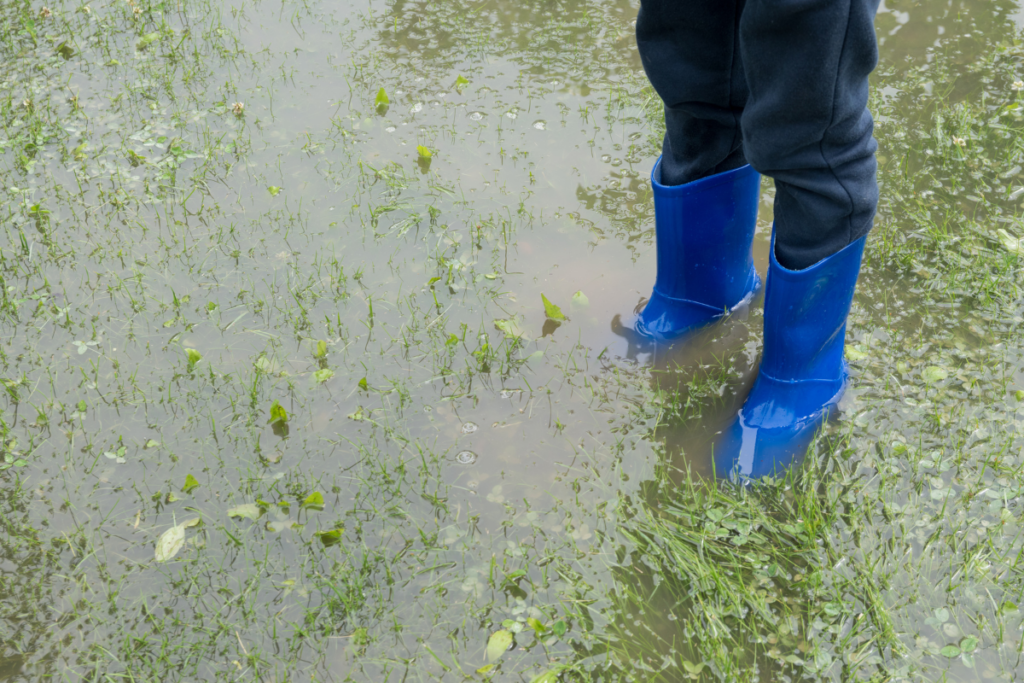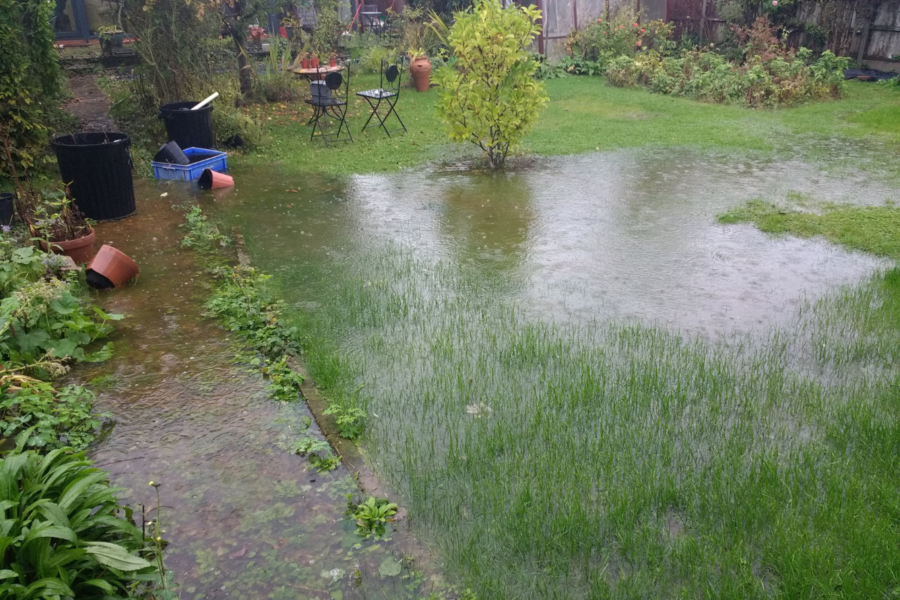Kim Stoddart and Sally Morgan explain how to deal with the risk of flooding
Rainfall patterns are changing. Many places have experienced record-breaking wet years. We are unfortunately likely to experience more extreme rainfall events with more heavy, monsoon-like downpours as our planet warms.
Why does a garden flood?
Water levels can rise very quickly after heavy rain. A stream can quickly become a torrent. Even small changes, such as a blocked drain or culvert, can lead to flooding. Extensions to buildings, new walls and garages can block the path that water used to take and cause problems as well. So after a heavy deluge, water had nowhere to go and floods the ground in front of the new wall. Your garden may simply be lower than others, or located at the bottom of a hill, so water flows in. Ultimately, your garden may flood because after heavy rain your surrounding area simply can’t cope with the volume of water.

Your garden is at risk of flooding – what do you do?
It has been raining heavily for a week and you are sent an alert that your home lies in an area that is expected to flood. Local authorities may distribute sandbags around at-risk areas, but if you live in a water-vulnerable location, it may be wise to have your own stockpile of sandbags and flood boards on hand. You can use them to protect areas such as the base of a greenhouse and its glass panels, or to direct water away from a weak wall. Flood boards can also be positioned across a gate to prevent floodwater from entering a garden.
If you have time, you can also prepare by doing the following:
- Lift pots, bags of soil and compost and equipment off the floor of the greenhouse, garage and shed.
- Place more valuable equipment, such as a lawnmower onto pallets.
- Unplug electrical equipment, such as heaters, lights and pond pumps.
- Turn off the water supply to your garden
- Make sure containers of fuel, oil and any pesticides you might have are placed on shelves out of reach of floodwaters and that gas cylinder valves are turned off.
- Place netting over your pond and secure it tightly so fish are not washed away.
- Harvest any crops in the ground if you can.

How to tell if your garden has been damaged by flooding?
A garden can look a complete mess after floodwaters have passed through. It’s best to avoid going in the garden till floodwaters have fully drained away to avoid further damage to the grass and ground. Get rid of spent sandbags as they will be contaminated. The same goes for compost and any vegetables in the ground if the garden has been underwater for some time.
Your soil is now likely to be waterlogged to an extent. While in this state it is easily compressed and susceptible to damage, so avoid walking on it and causing further harm. The same goes for lawns.
Waterlogged conditions cause stress to plants as the water fills the air spaces in the soil creating anaerobic conditions around roots, which can cause them to die. So in the weeks following a flood look for signs that flooding has damaged your plants such as stunted growth, yellowing of leaves and leaf drop come spring. In shrubs and trees a tell-tale sign is also bark starting to peel.
Be slightly reassured though that a summer flood is likely to have more serious consequences than a winter one. This is because summer plants are more growth active and therefore less able to provide the energy to cope with flooding.

Find more tips, advice and articles like this at the Amateur Gardening website. Subscribe to Amateur Gardening magazine now.





